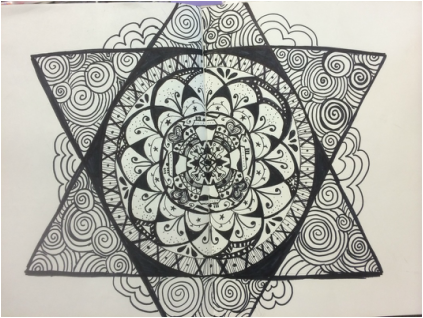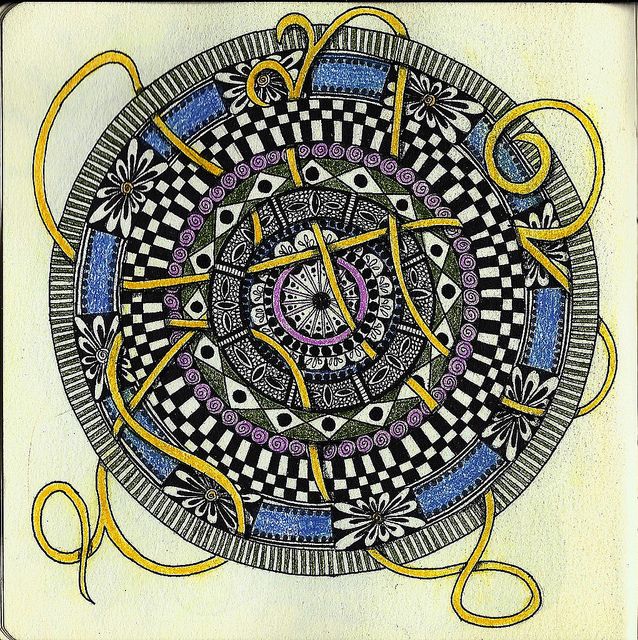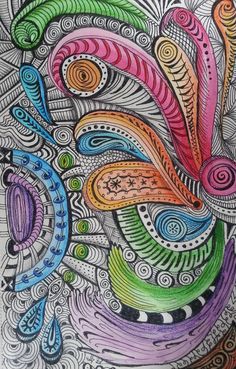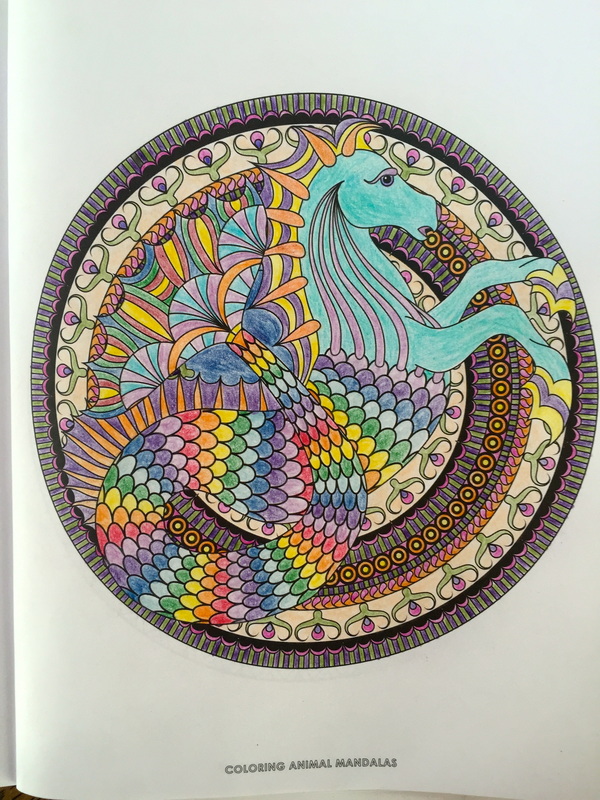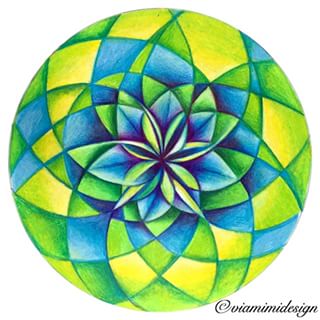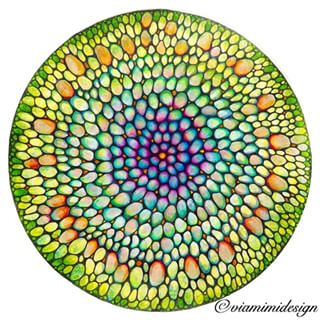MANDALA
1. Think/research/prepare: Make notes from the information on this page, and draw a few practice mandalas. Think about what you want your mandala to look like or what you'd like it to represent. You'll need to have at least one page done in your visual journal on day one. Get your ideas together and be ready to start your good copy on day two. If you can find any nice paper you can begin your good copy IF you have your notes and research/prep work done and you have looked at some of the videos.
2. Create a mandala. It should be intricate, consistently radial (click the word to see what radial means) and employ a great variety of different patterns and shapes. You can use whatever you want to create your mandala. Use a compass for help with circles. HINT: Look at examples of celtic knots for some really intricate ideas. Your mandala can include paper from magazines/newspapers, or you can choose to use markers, pencils,crayons or paint from the tempera paint trays.
Your mandala can represent YOU and elements of your life and/or personality. You may to select elements such as self, family, health, spiritual/religious, hobbies, etc, OR your mandala can be purely decorative with repetitive elements.
|
Mandala Links to Explore:
History of Mandalas http://www.crystalinks.com/mandala.html The Mandala Project http://www.mandalaproject.org/What/Index.html Healing Arts http://www.mysticalartsoftibet.org/mandala.htm Mandala Examples https://www.pinterest.com/rttcher/radial-symmetry/?lp=true |
The word "mandala" is from the classical Indian language of Sanskrit. Loosely translated to mean "circle," a mandala is far more than a simple shape. It represents wholeness, and can be seen as a model for the organizational structure of life itself--a cosmic diagram that reminds us of our relation to the infinite, the world that extends both beyond and within our bodies and minds. (Mandalaproject.org) Benefits of Mandalas: 1. Relieve tension, anxiety, fear and worry 2. Relax and heal the mind, body and spirit 3. Release repressed feelings and emotions 4. Freedom to release feelings in a non-threatening way 5. Stimulate creative thinking and problem-solving (TheSilverPen.com) |
The video below is great to watch...... notice how much effort and creativity goes into creating a beautiful piece of art..... only for it to disappear at the end. The emphasis is on prayer and the beauty of the meditations that the monks are doing.
cross-cultural patterns (from http://www.mandalaproject.org/What/Main.html)
The mandala pattern is used in many religious traditions. Hildegard von Bingen, a Christian nun in the 12th century, created many beautiful mandalas to express her visions and beliefs.
In the Americas, Indians have created medicine wheels and sand mandalas. The circular Aztec calendar was both a timekeeping device and a religious expression of ancient Aztecs.
In Asia, the Taoist "yin-yang" symbol represents opposition as well as interdependence. Tibetan mandalas are often highly intricate illustrations of religious significance that are used for meditation.
different cultures, similar expressions
Both Navajo Indians and Tibetan monks create sand mandalas to demonstrate the impermanence of life.
In ancient Tibet, as part of a spiritual practice, monks created intricate mandalas with colored sand made of crushed semiprecious stones. The tradition continues to this day as the monks travel to different cultures around the world to create sand mandalas and educate people about the culture of Tibet.
The mandala pattern is used in many religious traditions. Hildegard von Bingen, a Christian nun in the 12th century, created many beautiful mandalas to express her visions and beliefs.
In the Americas, Indians have created medicine wheels and sand mandalas. The circular Aztec calendar was both a timekeeping device and a religious expression of ancient Aztecs.
In Asia, the Taoist "yin-yang" symbol represents opposition as well as interdependence. Tibetan mandalas are often highly intricate illustrations of religious significance that are used for meditation.
different cultures, similar expressions
Both Navajo Indians and Tibetan monks create sand mandalas to demonstrate the impermanence of life.
In ancient Tibet, as part of a spiritual practice, monks created intricate mandalas with colored sand made of crushed semiprecious stones. The tradition continues to this day as the monks travel to different cultures around the world to create sand mandalas and educate people about the culture of Tibet.
...
